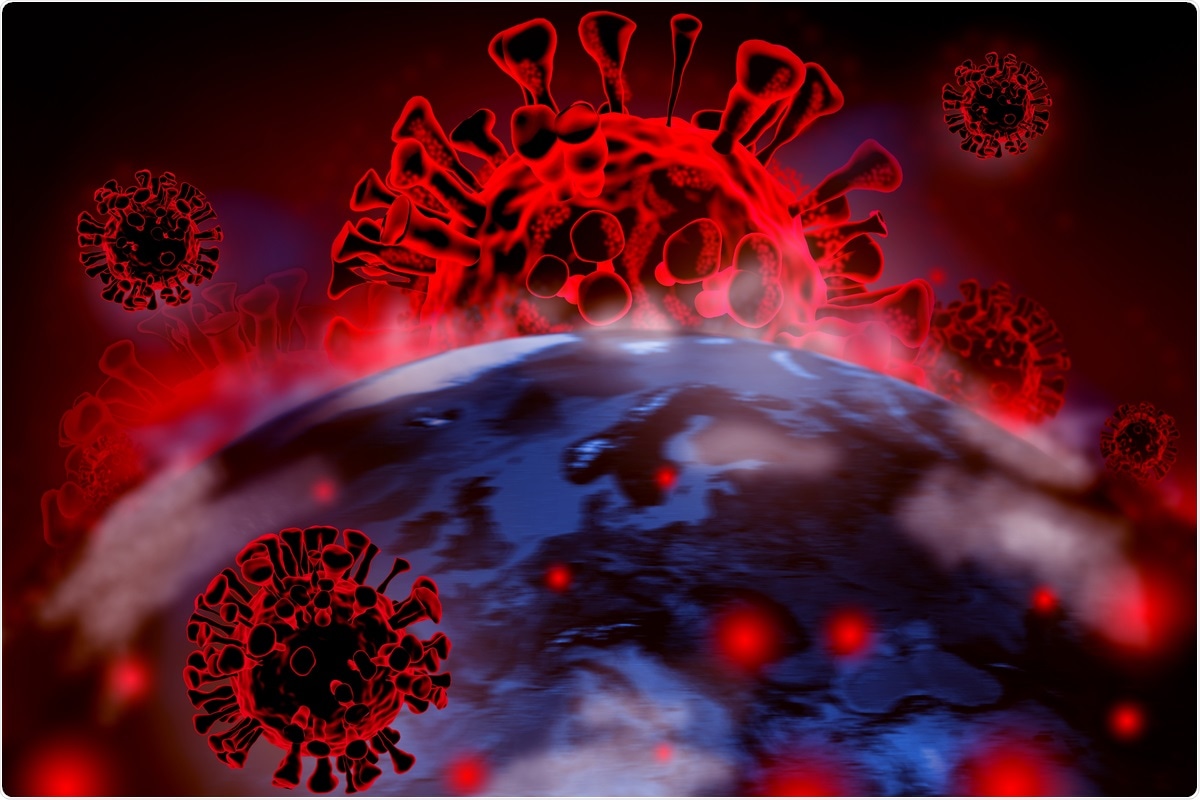In a recent letter to the Journal of Medical Virology, researchers explore the changes arising in severe acute respiratory syndrome coronavirus 2 (SARS-CoV-2) over time. Since SARS-CoV-2 first emerged at the end of December 2019, it has infected more than 472 million worldwide and caused over 6.09million deaths.

Study: Are we moving towards ending SARS-CoV-2? Image Credit: FOTOGRIN / Shutterstock.com
While in developed nations, mass vaccination programs have helped reduce the damage caused by the coronavirus disease 2019 (COVID-19), millions of individuals have yet to receive a vaccine. Furthermore, the emergence of new SARS-CoV-2 variants that are capable of evading both natural and vaccine-induced immunity also threatens the efficacy of current COVID-19 vaccines. Understanding the nature of the changes that have occurred since the beginning of the pandemic could help prevent more deaths in the future.
A brief history of COVID-19
Despite local and international efforts to halt the transmission of SARS-CoV-2, this virus quickly spread to the rest of the world, with serious epidemics initially reported in neighboring countries to China and Europe before ultimately being detected in almost every nation around the world.
Coronaviruses are separated into four genera; however, only alphacoronaviruses and betacoronaviruses are capable of infecting humans. SARS-CoV-2 shares about 89% sequence identity with other human coronaviruses, and 89-96% homology with coronavirus’ found in bats, thus suggesting a zoonotic origin. Media outlets rapidly identified this detail, which is often misreported as a direct jump from bats to humans. However, closer analysis has revealed several other potential sources of this virus, including at least one intermediate host that transferred SARS-CoV-2 from bats to humans.
SARS-CoV-2 mutations and variants
The nonstructural protein 14 (nsp14)-exon encodes a ribonucleic acid (RNA) proofreading exonuclease designed to ensure the fidelity of the genetic reproduction of SARS-CoV-2. Despite this, significant mutations in SARS-CoV-2 have accumulated over the course of the pandemic.
The most notable SARS-CoV-2 mutations to emerge are those affecting the spike protein, which is responsible for cell entry and membrane fusion. In fact, the first official variant of SARS-CoV-2 carried a mutation at D614G on the spike protein, which later became prevalent worldwide.
Since then, several SARS-CoV-2 variants including the Alpha (B.1.1.7), Beta (B.1.351), Gamma (P1), Delta (B.1.617.2), and Omicron (B.1.1.529) variants.
Mutations in the spike protein can allow SARS-CoV-2 to escape immune detection, thus allowing infection despite prior vaccination. To date, the SARS-CoV-2 Omicron variant is particularly known for its ability to cause breakthrough infections.
Several drugs have recently been developed that can protect individuals, despite constant mutations. Most of these therapeutics target the main viral protease Mpro/3CL protease or RNA-dependant RNA polymerase (RdRp), which are conserved across all variants. As immunity against SARS-CoV-2 fades relatively rapidly, drugs such as remdesivir, molnupiravir, and PAXLOVID could help provide an alternative to constant vaccine boosters.
Increased transmissibility and reduced severity of Omicron infection
Some mutations, such as in those within the regulatory region of the nucleocapsid genes open reading frame 9b (Orf9b) and Orf6, can lead to higher expression. For these particular genes, this delays the host immune response, thereby increasing viral fitness.
In particular, the Omicron variant consists of a high number of mutations that have contributed to its increased transmissibility. Moreover, the Omicron variant binds to the angiotensin-converting enzyme 2 (ACE2) receptor with 44% more affinity than the wild-type strain.
However, other Omicron mutations appear to reduce the severity of infection with this variant once inside the host cell. In fact, the Omicron variant shows significantly reduced viral loads in the human airway than other cells, whereas reduced processing of the spike protein appears to significantly reduce cell-to-cell transmission. The Omicron variant also appears to be more vulnerable to temperature-based decay as compared to other variants.
Conclusions
The reduced severity of the Omicron variant, as well as its rise to dominance in several nations, could suggest that this virus may have acquired these mutations in Africa, where it first rose to prominence, especially as many African nations have lower levels of vaccination. Other theories surmise that SARS-CoV-2 may have experienced several additional zoonotic events, wherein the virus acquired new mutations until transferring back to humans.
The high transmissibility and low severity of the SARS-CoV-2 Omicron variant could allow it to act as a natural vaccine dose; however, many other scientists do not support this. COVID-19 can still be deadly to elderly and immunocompromised individuals; therefore, allowing it a large population to act as a reservoir is likely to allow for new and potentially more dangerous variants to arise.
However, the reduced severity of Omicron could still provide some hope, as any zoonotic diseases show significantly lower severity over time as they adapt to their new hosts. It is certainly possible that SARS-CoV-2 could continue down this path.
Journal reference:
- Mishra, A. R., Nayak, D., and Byrareddy, S. N. (2022). Are we moving towards ending SARS-CoV-2? Journal of Medical Virology. doi:10.1002/jmv.27722.